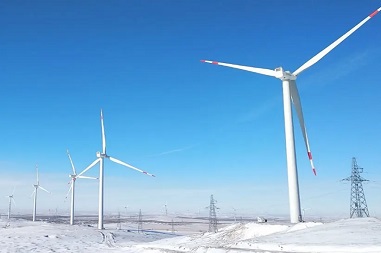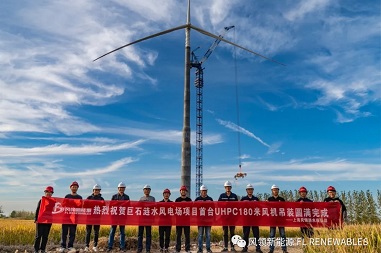The wind power tower shaft, as the cornerstone of concrete tower wind turbines, is not only the support structure for the wind turbine but also a bridge that converts natural wind energy into clean electrical power. Made from precast concrete components or cast in place, it ensures the structure's strength and stability. The height of the wind power tower shaft typically ranges from 120 to 180 meters, and its design and shape vary based on the turbine's power and installation location. As a critical component of the wind power system, the concrete tower shaft undergoes strict quality control during manufacturing to ensure it meets the high-efficiency and safety requirements of wind turbines.
The wind power tower shaft provides a stable foundation for the turbine, securely connecting its various parts and ensuring its stable suspension at high altitudes.
The platform at the top of the tower shaft is crucial for the installation of turbine blades, and its stability directly affects the blades' efficiency in capturing and converting wind energy.
The inner and outer walls of the wind power tower shaft provide robust protection for internal cables and electrical equipment, effectively shielding them from harsh environmental conditions.
Its sturdy structure and excellent stability ensure that the turbine can operate continuously and safely under high wind speeds and adverse weather conditions.
Through precise design and manufacturing, the wind power tower shaft significantly reduces the vibrations and noise produced by turbine operation, minimizing the impact on the surrounding environment and residents.
In the wind power sector, there are various types of tower shafts, but the concrete wind turbine tower stands out due to its unique advantages. Among them, concrete tower shafts are particularly suitable for harsh environments like offshore wind farms due to their excellent wind resistance and stability. Additionally, there are steel pipe shafts, hybrid shafts, and cantilever shafts, each displaying unique applicability in different scenarios and requirements. In selecting and planning wind power projects, choosing the appropriate type of tower shaft based on factors such as turbine size, wind farm environment, cost, and reliability is crucial to ensure the stable operation and efficient output of the wind power system.
As global demand for renewable energy continues to grow, wind power, as a clean and renewable energy source, is receiving increasing attention. As a key component of wind power systems, the wind power tower shaft plays an irreplaceable role in ensuring the safe and efficient operation of wind turbines. Particularly, concrete tower wind turbines, with their unique advantages and diverse types, have become a significant choice in the wind power sector. In the future, with ongoing technological advancements and further cost reductions, wind power tower shafts will see broader application worldwide, contributing more to the development of renewable energy and addressing climate change.


